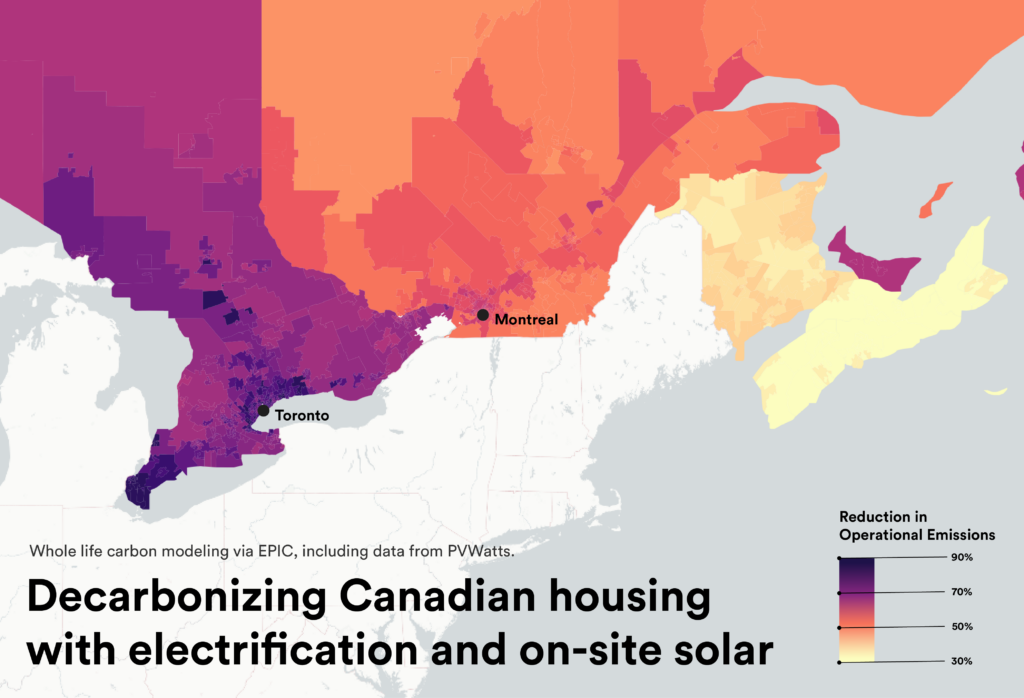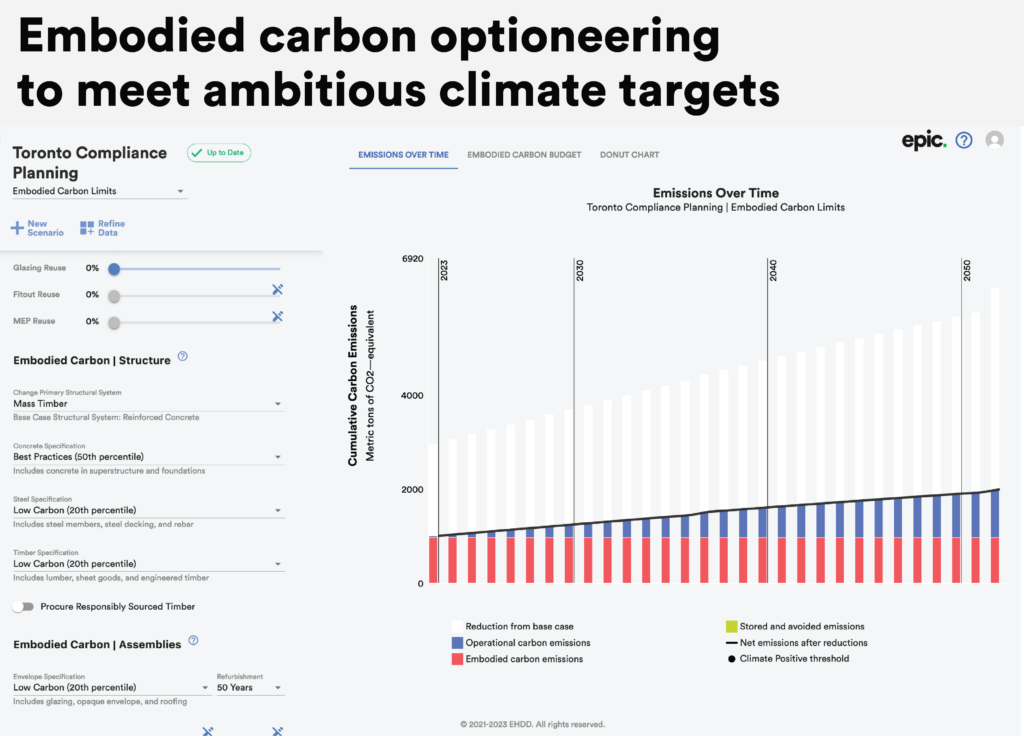EHDD Advances Climate Action in Architecture with Canadian Expansion of EPIC Tool

Published: Oct. 12, 2023 | FOR IMMEDIATE RELEASE
EHDD, a pioneer in climate-positive architecture, has announced the expansion of the Early Phase Integrated Carbon (EPIC) assessment tool to support Canadian users, enhancing the regional specificity and international reach of the application. With this update, EHDD continues to break barriers in sustainable design by adapting to regional building characteristics, energy sources, and climate conditions, ensuring the accuracy and reliability of embodied carbon calculations.
“Climate impacts don’t stay within national boundaries,” said Brad Jacobson, FAIA, a Principal at EHDD. “Our EPIC tool will increasingly reflect the global nature of this challenge and, at the same time, the regionally specific solutions that are most impactful on any given project.”
Launched in 2021 as a free web application, EPIC has been embraced by nearly 3,000 professionals across architecture and engineering firms in the United States, alongside a growing number of users outside the AEC industry, including real estate developers and environmental, social, and governance (ESG) investors. The tool aids design teams in determining the most effective strategies for carbon emissions reductions in the early stages of a project, a critical time when data might be scarce but the opportunity for impact is significant.
EHDD identified a growing need for EPIC in Canada, where cities like Vancouver and Toronto have enacted embodied carbon reporting legislation. Before the update, many EPIC users were employing complex workarounds to adapt the tool for Canadian buildings.
“The manufacturing of concrete, the building stock, the electric grid — all these factors that impact a building’s whole life carbon — are regionally specific, and we’ve upgraded EPIC to reflect those regional differences across Canada,” said Jack Rusk, director of Climate Strategy with EHDD.
The update is set to streamline the process, providing Canada-specific results and addressing the unique aspects of the Canadian building stock, energy grids, and material manufacturing. The Canadian update uses a combination of government data sources, industry white papers, and peer-reviewed literature, ensuring that the Canadian data is internally consistent and comparable to results from the United States.

This expansion also lays the groundwork for further internationalization, addressing embodied carbon reporting requirements in various countries. “We’re building the data infrastructure necessary to describe the nuances of each region, with the goal of a tool that can support users with global portfolios,” said Lalyn Yu, Research Specialist with EHDD.
In addition to the geographical expansion, the EPIC tool has been upgraded to include building emissions from refrigerants, a significant yet often overlooked aspect of building-related emissions. EHDD believes in encompassing all real emissions related to buildings and is working closely with a team of industry experts and non-profit advocacy organizations to refine assumptions and strategies around refrigerant emissions.
EHDD’s dedication to climate action and sustainable architecture is evident through the continuous improvement and expansion of the EPIC tool. By making EPIC free and available to all, EHDD fosters a collaborative environment in the pursuit of a sustainable future, pushing the boundaries of conventional design practice.
For further information, please visit EPIC Assessment (ehdd.com).
About EHDD
EHDD is an award-winning architecture firm with a strong commitment to advancing climate action through sustainable design. With decades of experience and numerous successful projects, EHDD creates transformative places of belonging and impact.